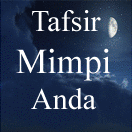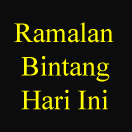Collisions are the final products of subduction. There are several
general varieties of collisions. They may be between
island arcs and continents, such as the Ordovician Taconic
orogeny in eastern North America, or they may be between
passive margins on one continent and an Andean margin on
another. More rarely, collisions between two convergent margins
occur above two oppositely dipping subduction zones,
with a contemporary example extant in the Molucca Sea of
Indonesia. Finally, collisions may be between two continents,
such as the ongoing India/Asia collision that is affecting much
of Asia.
Arc/continent collisions are the simplest of collisional
events. As an arc approaches a continent, the continental
margin is flexed downward by the weight of the arc, much
like a ruler pushed down over the edge of a desk. The flexure
induces a bulge a few hundred kilometers wide in front of the
active collision zone, and this bulge migrates in front of the
collision as a few-hundred-meter-high broad topographic
swell. As the arc terrane rides up onto the continent, the thick
sediments in the continental rise are typically scraped off and
progressively added to the accretionary prism, with the oldest
thrust faults being the ones closest to the arc, and progressively
younger thrust faults along the base of the prism.
Many forearc regions have ophiolitic basement, and these
ophiolites get thrust upon the continents during collision
events and are preserved in many arc/continent collisional
orogens. The accretionary wedge grows and begins to shed
olistostromes into the foredeep basin between the arc and
continent, along with flysch and distal black shales. These
three main facies migrate in front of the moving arc/accretionary
complex at a rate equal to the convergence rate and
drown any shallow water carbonate deposition. After the arc
terrane rides up the continental rise, slope, and shelf, it grinds
to a halt when isostatic (buoyancy) effects do not allow continued
convergence. At this stage, a new subduction zone
may be initiated behind the collided arc, allowing convergence
to continue between the two plates.
Continent/continent collisions are the most dramatic of
collisional events, with the current example of the convergence
and collision of Africa, Arabia, and India with Europe
and Asia, affecting much of the continental landmass of the
world. Continental collisions are associated with thickening
of continental crust and the formation of high mountains,
and deformation distributed over wide areas. The convergence
between India and Asia dramatically slowed about 38
million years ago, probably associated with initial stages of
that collision between 25 million and 40 million years ago.
The collision has resulted in the uplift of the Himalayan
mountain chain, the Tibetan plateau, and formed a wide zone
of deformation that extends well into Siberia and includes
much of southeast Asia. Since the collision, there has been
2–2.4 inches per year (5–6 cm/yr) of convergence between
India and Asia, meaning that a minimum of 775 miles (1,250
km) has had to be accommodated in the collision zone. This
convergence has been accommodated in several ways. Two
large faults between India and Asia, the Main Central thrust
and the Main Boundary thrust are estimated to have 250 and
120 miles (400 and 200 km) of displacement on them, so
they are able to account for less than half of the displacement.
Folds of the crust and general shortening and thickening
of the lithosphere may account for some of the
convergence, but not a large amount. It appears that much of
the convergence was accommodated by underthrusting of the
Indian plate beneath Tibet, and by strike-slip faulting moving
or extruding parts of Asia out of the collision zone toward
the southwest Pacific.
The Tibetan Plateau and Himalayan mountain chain are
about 375 miles (600 km) wide, with the crust beneath the
region being about 45 miles (70 km) thick, twice that of normal
continental crust. This has led to years of scientific investigation
about the mechanism of thickening. Some models
and data suggest that India is thrust under Asia for 600 kilometers,
whereas other models and data suggest that the
region has thickened by thrusting at the edges and plane
strain in the center. In either case, the base of the Tibetan
crust has been heated to the extent that partial melts are
beginning to form, and high heat flow in some rifts on the
plateau is associated with the intrusions at depth. The intru-
sions are weakening the base of the crust which is starting to
collapse under the weight of the overlying mountains, and the
entire plateau is on the verge of undergoing extension.
The collisional process is resulting in the formation of a
layered differentiated lower continental crust in Tibet with
granitic melts forming a layer that has been extracted from a
granulitic residue, along with strong deformation. These processes
are not readily observable 30 miles (50 km) beneath
Tibet, but they are preserved in many very old (generally Precambrian)
high-grade gneiss terranes around the world that
are thought to have formed in continental collision zones.
Continent/continent collision zones tend to have major
effects on global plate motions. Convergence that used to be
accommodated between the two continents must be transferred
elsewhere on the planet, since all plate motions must
sum to zero on the planet. Therefore, continental collisions
typically cause events elsewhere, such as the formation of new
subduction zones and a global reorganization of plate motions.
See also ACCRETIONARY WEDGE; CONTINENTAL CRUST;
CONVERGENT PLATE MARGIN PROCESSES; DEFORMATION OF
ROCKS; METAMORPHISM; PLATE TECTONICS; PLUTON; STRUCTURAL
GEOLOGY; VOLCANO.

















Tidak ada komentar:
Posting Komentar
Catatan: Hanya anggota dari blog ini yang dapat mengirim komentar.